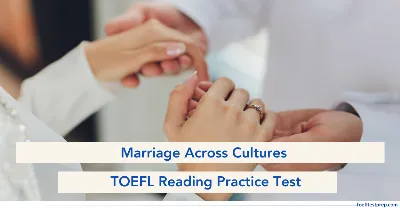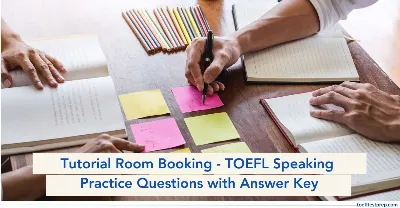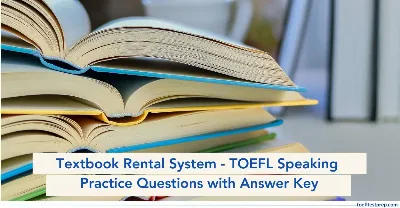War and Society - TOEFL iBT® Reading Practice Test

"War has played a pivotal role in shaping societies throughout history, influencing not only the political boundaries of nations but also the values, norms, and daily lives of their people. "
Key Highlights
War has played a pivotal role in shaping societies throughout history, influencing not only the political boundaries of nations but also the values, norms, and daily lives of their people. While conflicts often emerge from disputes over resources, power, or ideology, their impact extends beyond the battlefield, affecting cultural, economic, and social structures in profound ways.
From ancient civilizations to modern nation-states, war has redefined communities and catalyzed significant changes, leading to shifts in governance, economic transformations, and, at times, social progress. This passage explores the complex relationship between war and society, examining both the immediate and long-lasting effects of conflict on human communities.
Reading Instruction:
- You have 15 minutes to read the following passage and answer all 9 questions related to it.
- Most questions are worth 1 point, but the last question is worth more. The directions indicate how many points you will receive for that specific question.
- The specific section/paragraphs have been provided again with the question for ease of understanding and quick solution.
- Some questions include a word or phrase that is highlighted in the question as well as in
the paragraph for quick reference.
War and Society
The complicated relationship between war and society has been a common topic of study, showing how armed conflict shapes and is shaped by social interactions. Throughout history, wars have not only changed geopolitical boundaries but have also deeply influenced the social fabric of nations. The effects of warfare go beyond the battlefield. They affect civilian populations, change social structures, and redefine cultural norms. Therefore, understanding the connection between war and society is essential for grasping the broader effects of conflict throughout human history.
One of the most important consequences of war is the population disruption it often causes. Armed conflicts typically lead to a significant loss of life, resulting in the displacement of populations and changing the demographic makeup of affected areas. For example, during World War II, an estimated 60 million people died, and millions more were displaced from their homes, leading to major shifts in population density and ethnic composition across Europe. Additionally, the aftermath of war often creates a gender imbalance, as men are more affected by combat. This imbalance can lead to long-term societal changes, including shifts in family structures and gender roles, as women often take on new responsibilities in the absence of men, challenging traditional norms.
Economically, the impact of war can be both destructive and changing. On one hand, the immediate effects of conflict often include the destruction of facilities, loss of agricultural productivity, and disruption of trade. For example, the Vietnam War caused extensive damage to the countrys facilities, which took decades to rebuild. On the other hand, war can stimulate economic growth in certain sectors, especially those related to military production and technology. The post-World War II era in the United States, often called the military-industrial complex,saw significant advancements in technology and economic growth driven by military needs. This two sides show how war can both hinder and promote economic development, depending on the context and the sectors involved.
The political effects of war are equally important, often leading to shifts in power dynamics and government structures. Wars can result in the rise and fall of governments, as seen after the Arab Spring, where several governments were overthrown due to popular uprisings. Additionally, the experience of war can spark new political beliefs and movements. For instance, the devastation caused by World War I contributed to the rise of fascism in Europe, as disappointed populations sought radical solutions to their problems. On the other hand, post-war periods can also encourage democratic movements, as seen in Germany and Japan after World War II, where Allied powers implemented democratic reforms after defeat, reshaping the political landscape.
Socially, the experience of war can lead to significant changes in cultural norms and values. The shared experience of conflict often encourages a sense of unity and national identity among those involved. However, it can also deepen divisions within societies, particularly along ethnic or ideological lines. The Yugoslav Wars of the 1990s serve as a clear example, where long-standing ethnic tensions were reignited, leading to brutal conflicts and crimes. Moreover, the lasting impact of war on individuals and communities can result in long-lasting trauma, influencing societal attitudes towards violence and conflict resolution. The occurrence of post-traumatic stress disorder (PTSD) among veterans illustrates the lasting psychological scars that war can leave, affecting not only the individuals involved but also their families and communities.
In conclusion, the connection between war and society is a changing and evolving relationship that deserves careful examination. The consequences of war extend far beyond the immediate effects of combat, influencing population patterns, economic structures, political landscapes, and cultural norms. As societies continue to deal with the legacies of past conflicts, it is crucial to recognize the varied nature of this relationship. Understanding how war shapes and is shaped by societal factors can provide valuable insights into contemporary conflicts and their possible resolutions. As we move forward, the lessons learned from history may help us manage the complex landscape of war and its lasting impact on society, leaving room for further exploration of unresolved questions.
Directions: Once you have read the passage, answer the following questions.
Paragraph 1
The complicated relationship between war and society has been a common topic of study, showing how armed conflict shapes and is shaped by social interactions. Throughout history, wars have not only changed geopolitical boundaries but have also deeply influenced the social fabric of nations. The effects of warfare go beyond the battlefield. They affect civilian populations, change social structures, and redefine cultural norms. Therefore, understanding the connection between war and society is essential for grasping the broader effects of conflict throughout human history.
Factual Information Questions
- According to paragraph 1, what is one of the main reasons for studying the relationship between war and society?
- To understand the economic impacts of warfare.
- To grasp the broader effects of conflict throughout human history
- To analyse the military strategies used in wars.
- To explore the technological advancements during wartime
Negative Factual Information Questions
- In paragraph 1, each of the following is mentioned as an effect of warfare EXCEPT:
- Changes in geopolitical boundaries
- Influence on civilian populations
- The establishment of new military alliances
- Redefinition of cultural norms
Paragraph 2
One of the most important consequences of war is the population disruption it often causes. Armed conflicts typically lead to a significant loss of life, resulting in the displacement of populations and changing the demographic makeup of affected areas. For example, during World War II, an estimated 60 million people died, and millions more were displaced from their homes, leading to major shifts in population density and ethnic composition across Europe. Additionally, the aftermath of war often creates a gender imbalance, as men are more affected by combat. This imbalance can lead to long-term societal changes, including shifts in family structures and gender roles, as women often take on new responsibilities in the absence of men, challenging traditional norms.
Inference Questions
- What can be inferred from paragraph 2 about the impact of war on gender roles?
- War has no effect on gender roles.
- Women are less affected by war than men.
- War can lead to women taking on new responsibilities.
- Gender roles remain unchanged during wartime.
Rhetorical Purpose Questions
- Why does the author include the example of World War II in paragraph 2?
- To illustrate the economic impact of war.
- To highlight the demographic changes caused by armed conflict.
- To discuss the political consequences of war.
- To show the technological advancements during the war
Paragraph 3
Economically, the impact of war can be both destructive and changing. On one hand, the immediate effects of conflict often include the destruction of facilities, loss of agricultural productivity, and disruption of trade. For example, the Vietnam War caused extensive damage to the countrys facilities, which took decades to rebuild. On the other hand, war can stimulate economic growth in certain sectors, especially those related to military production and technology. The post-World War II era in the United States, often called the "military-industrial complex," saw significant advancements in technology and economic growth driven by military needs. This two sides show how war can both hinder and promote economic development, depending on the context and the sectors involved.
Vocabulary Questions
- The phrase military industrial complex in paragraph 3 refers to:
- A network of military alliances.
- The relationship between military needs and economic growth.
- The destruction of military facilities.
- The technological advancements in civilian industries.
Sentence Simplification Questions
- Which of the sentences below best expresses the essential information in the following
text from paragraph 3? On one hand, the immediate effects of conflict often include the destruction of facilities, loss of agricultural productivity, and disruption of trade
- War leads to the destruction of facilities and trade disruption.
- Conflict has immediate negative effects on agriculture and trade.
- The effects of war are primarily economic.
- War causes destruction and loss in various sectors.
Paragraph 4
The political effects of war are equally important, often leading to shifts in power dynamics and government structures. Wars can result in the rise and fall of governments, as seen after the Arab Spring, where several governments were overthrown due to popular uprisings. Additionally, the experience of war can spark new political beliefs and movements. For instance, the devastation caused by World War I contributed to the rise of fascism in Europe, as disappointed populations sought radical solutions to their problems. On the other hand, post-war periods can also encourage democratic movements, as seen in Germany and Japan after World War II, where Allied powers implemented democratic reforms after defeat, reshaping the political landscape.
Purpose of the Passage Questions
- What is the main purpose of paragraph 4?
- To discuss the economic consequences of war.
- To highlight the political changes resulting from armed conflict.
- To analyse the social effects of warfare.To explore the historical context of the Arab Spring.
Paragraph 5
Socially, the experience of war can lead to significant changes in cultural norms and values. The shared experience of conflict often encourages a sense of unity and national identity among those involved. However, it can also deepen divisions within societies, particularly along ethnic or ideological lines. The Yugoslav Wars of the 1990s serve as a clear example, where long-standing ethnic tensions were reignited, leading to brutal conflicts and crimes. Moreover, the lasting impact of war on individuals and communities can result in long-lasting trauma, influencing societal attitudes towards violence and conflict resolution. The occurrence of post-traumatic stress disorder (PTSD) among veterans illustrates the lasting psychological scars that war can leave, affecting not only the individuals involved but also their families and communities.
Insert Missing Sentence Question
- In paragraph 5, there is a missing sentence. The paragraph is repeated below and shows four letters (A, B, C, and D) that indicate where the following sentence could be added. These changes can have profound implications for future generations. Where would the sentence best fit?
- The shared experience of conflict often encourages a sense of unity and national identity
among those involved. - However, it can also deepen divisions within societies, particularly along ethnic or ideological lines.
- The Yugoslav Wars of the 1990s serve as a clear example, where long-standing ethnic tensions were reignited, leading to brutal conflicts and crimes.
- Moreover, the lasting impact of war on individuals and communities can result in long-lasting trauma, influencing societal attitudes towards violence and conflict resolution.
- The shared experience of conflict often encourages a sense of unity and national identity
Prose Summary Questions
Directions: An introductory sentence for a brief summary of the passage is provided below. Complete the summary by selecting the THREE answer choices that express the most important ideas in the passage. Some sentences do not belong in the summary because they express ideas that are not presented in the passage or are minor ideas in the passage. This
question is worth 2 points.
- War has a profound impact on society, influencing various aspects such as:
- The relationship between war and economic growth can be both positive and negative.
- The experience of war can lead to significant changes in cultural norms and values.
- The political landscape is often reshaped by the outcomes of armed conflict.
- War has no lasting effects on individuals and communities.
Prose Summary Questions
- In conclusion, the connection between war and society is a changing and evolving relationship that deserves careful examination. The consequences of war extend far beyond the immediate effects of combat, influencing population patterns, economic structures, political landscapes, and cultural norms. As societies continue to deal with the legacies of past conflicts, it is crucial to recognise the varied nature of this relationship. Understanding how war shapes and is shaped by societal factors can provide valuable insights into contemporary conflicts and their possible resolutions. As we move forward, the lessons learned from history may help us manage the complex landscape of war and its lasting impact on society, leaving room for further exploration of unresolved questions.
Answer Key with Explanation for TOEFL Reading Passage - War and Society
1. Answer: B
Explanation:The passage explicitly states that understanding the connection between war and society is essential for grasping the broader effects of conflict throughout human history. This indicates that the primary reason for studying this relationship is to comprehend its extensive implications.
2. Answer: C
Explanation:The paragraph discusses changes in geopolitical boundaries, influences on civilian populations, and the redefinition of cultural norms as effects of warfare. However, it does not mention the establishment of new military alliances, making option C the correct answer.
3. Answer: C
Explanation:The paragraph explains that the aftermath of war often creates a gender imbalance, with men being more affected by combat. This situation leads to women assuming new responsibilities, which indicates that war can indeed alter traditional gender roles.
4. Answer: C
Explanation:The example of World War II is used to illustrate the significant loss of life and displacement of populations, which resulted in major shifts in demographic makeup across Europe. This directly relates to the paragraph's focus on population disruption as a consequence of war.
5. Answer: B
Explanation:The term military-industrial complex describes the interconnectedness of military requirements and the resulting economic growth, particularly in sectors related to military production and technology. This aligns with the context provided in the paragraph.
6. Answer: B
Explanation: This option succinctly captures the essence of the original sentence, which discusses the immediate destructive effects of war on facilities, agricultural productivity, and trade. It highlights the negative consequences without losing the core message.
7. Answer: B
Explanation: The paragraph focuses on the political effects of war, discussing shifts in power dynamics, the rise and fall of governments, and the emergence of new political beliefs. This clearly indicates that the main purpose is to highlight political changes due to armed conflict.
8. Answer: D
Explanation: The sentence "These changes can have profound implications for future generations fits best after the discussion of the lasting impact of war on individuals and communities. It logically follows the mention of trauma and societal attitudes, emphasizing the long-term effects of these changes.
9. Answer: A, B, and C
Explanation: This concluding statement summarises the passage's main themes, reiterating the importance of understanding the complex relationship between war and society. It emphasizes the need for ongoing exploration of this topic, reflecting the passage's overall message.
Also Read:
- New Language - TOEFL Speaking Independent Practice Test Paper with Responses
- Serengeti Herbivores - TOEFL Reading Practice Test Paper with Answers
- The Easter Island - TOEFL Reading Practice Questions with Answer Key
- Theory of Evolution - TOEFL Reading Practice Test with Answer Key
- Microplastics - TOEFL iBT® Reading Practice Test with Answer Key
Featured Articles

Marriage Across Cultures - TOEFL Reading Practice Test
Improve TOEFL Reading with passages on 'Marriage Across Cultures,' delving into unique traditions, values, and global perspectives on marriage.
July 15, 2025
Writing Center Services - TOEFL Speaking Practice Test with Answers (Integrated)
Prepare for the TOEFL Integrated Speaking section with a practice test on 'Writing Center Services' and learn to improve score in TOEFL exam.
July 15, 2025
Tutorial Room Booking - TOEFL Speaking Practice Test with Answers (Integrated)
Prepare for the TOEFL Integrated Speaking section with a practice test on 'Tutorial Room Booking ' and learn to improve score in TOEFL exam.
July 15, 2025
Textbook Rental System - TOEFL Speaking Practice Test with Answers (Integrated)
Prepare for the TOEFL Integrated Speaking section with a practice test on 'Textbook Rental System' and learn to improve score in TOEFL exam.
July 15, 2025